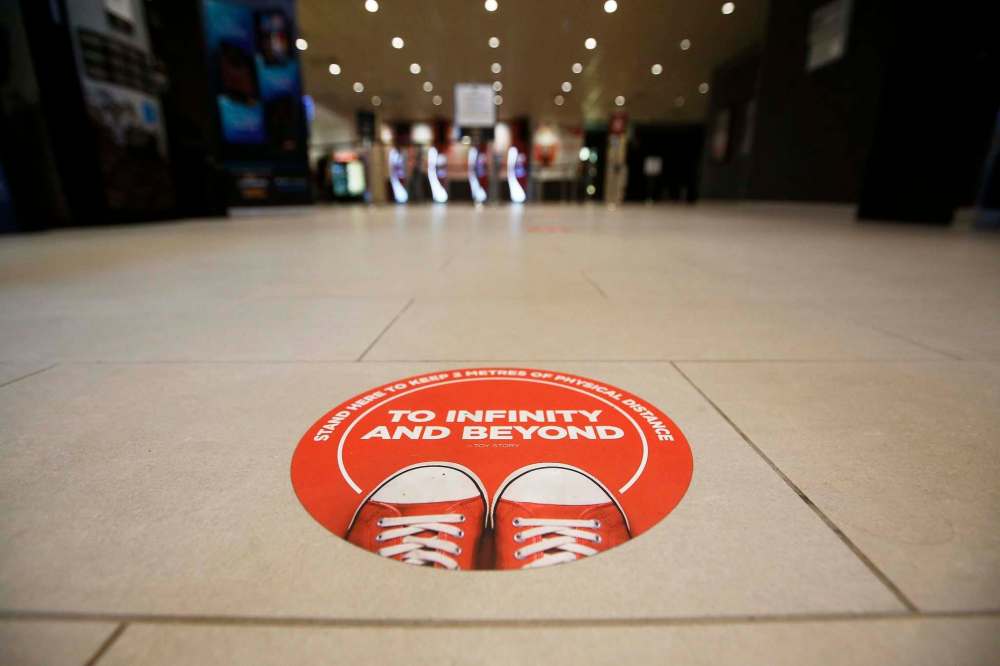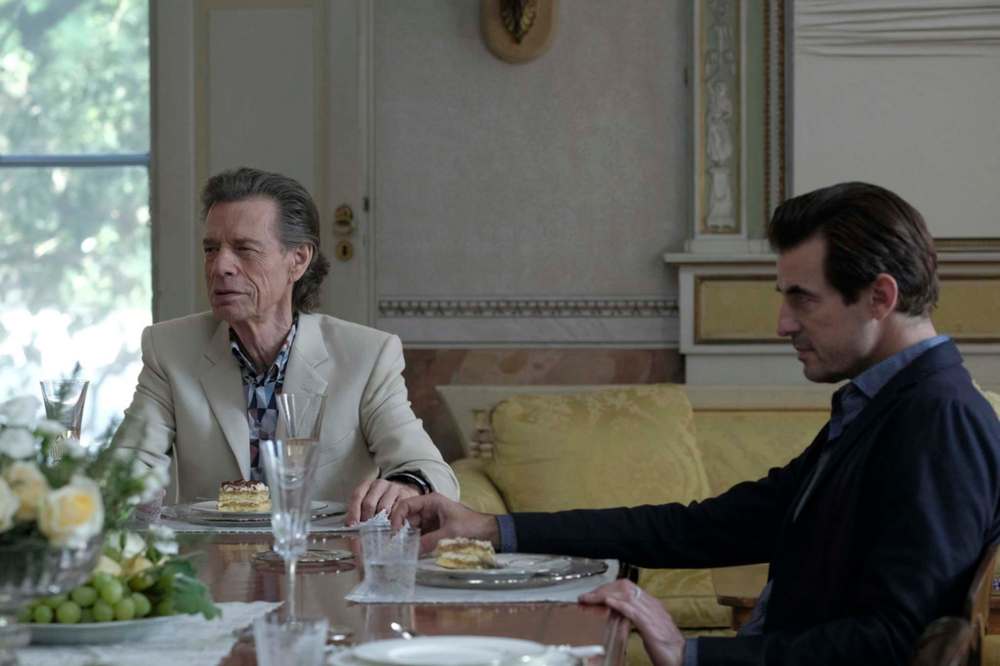Movie house homecoming Big screen escapism still exists — just beyond the hand sanitizer and social distancing
Read this article for free:
or
Already have an account? Log in here »
To continue reading, please subscribe:
Monthly Digital Subscription
$0 for the first 4 weeks*
- Enjoy unlimited reading on winnipegfreepress.com
- Read the E-Edition, our digital replica newspaper
- Access News Break, our award-winning app
- Play interactive puzzles
*No charge for 4 weeks then price increases to the regular rate of $19.00 plus GST every four weeks. Offer available to new and qualified returning subscribers only. Cancel any time.
Monthly Digital Subscription
$4.75/week*
- Enjoy unlimited reading on winnipegfreepress.com
- Read the E-Edition, our digital replica newspaper
- Access News Break, our award-winning app
- Play interactive puzzles
*Billed as $19 plus GST every four weeks. Cancel any time.
To continue reading, please subscribe:
Add Free Press access to your Brandon Sun subscription for only an additional
$1 for the first 4 weeks*
*Your next subscription payment will increase by $1.00 and you will be charged $16.99 plus GST for four weeks. After four weeks, your payment will increase to $23.99 plus GST every four weeks.
Read unlimited articles for free today:
or
Already have an account? Log in here »
Hey there, time traveller!
This article was published 10/08/2020 (1952 days ago), so information in it may no longer be current.
I’ve watched plenty of films in the last five months. But they’ve all been on my computer screen.
Last weekend, I ventured back to a real-live movie theatre to see one of the few new releases out right now, The Burnt Orange Heresy (more on that later).
On a Saturday night, the doors at the Landmark Cinemas 8 in Grant Park are opened but not fully retracted, giving the theatre a slightly hesitant air. The swanky lounge area is closed.
There’s a hand-sanitizing station immediately inside, and masked staff members with spray bottles are cleaning high-touch surfaces.

Signs set out COVID-19 protocols, including floor decals in the concession line marking two-metre distances with movie dialogue (“It’s Just a Jump to the Left;” “To Infinity and Beyond!”).
The concession stand offers reduced menu items and requests payment by cards, not cash.
There is no milling around in the lobby. Screenings are spaced out to allow for cleaning and sanitizing spray-downs between shows. When the movie is over, audience members are encouraged to leave by row, from front to back, as you would exit an airplane, and then directed out into the mall by the side hallway, to avoid crowding.

Theatre seating is spread out. Two people who come together can sit together, but there will be two empty seats on either side of you — and with those big, soft reclining chairs that’s quite a distance. A checkerboard seating pattern also means there’s no one directly behind or in front of you. This is actually kind of nice.
Clearly, there’s much that’s different in the pandemic-era movie-going experience. Underneath all the social distancing and sanitizer, though, the familiar emotions are still there. I felt again the anticipation, the excitement, the immersiveness as the lights go down and the main feature starts to roll.
That’s always been cinema’s promise — to take us out of our lives into some other world. It has carried movie audiences through economic depressions and wars. It will carry us through this, too.
● ● ●
So, the film itself. The Burnt Orange Heresy is a neo-noir art thriller.
Other movies playing at the Landmark Cinemas are classic blockbusters (Jurassic Park, Jaws, The Exorcist) or recent releases that have also played on video-on-demand. So far, there is no Tenet or Mulan or Bond film — no major big-screen, big-event movie made to draw fanboys and fangirls into the multiplex.
This minor work offers a gradual return to the movie-going experience, with some intriguing pleasures that ultimately dwindle into drawn-out disappointment.
Movie review
The Burnt Orange Heresy
Starring Claes Bang and Elizabeth Debicki
Grant Park
★★★
Based on a nihilistic 1971 crime novel by Miami writer Charles Willeford, this story of deception, fraud and murder has been moved from Florida to a villa on Italy’s Lake Como.
Danish actor Claes Bang — who has starred in another (and better) art satire, The Square — is James Figueros, an art critic who likes to expound on the power of the art critic. Living far beyond his means, James jumps at the chance to visit the lakeside estate of eccentric art collector Joseph Cassidy, played with louche magnificence by Mick Jagger, who’s made only rare movie appearances since his work in 1970’s Performance. (He’s also in a band, apparently.)
Cassidy wants James to acquire a painting by elusive genius Jerome Debney (Donald Sutherland), whose entire oeuvre was destroyed in two mysterious fires and whose reputation rests on his prickly, reclusive persona and a big conceptual statement — an empty frame with an enigmatic title — exhibited in 1968.
James, along with recent hook-up Berenice Hollis (Elizabeth Debicki of Widows and The Night Manager), a young American woman with a hazy background, ends up falling into a situation that starts off as dodgy and then becomes much, much worse.

Director Guiseppe Capotondi (Suburra: Blood on Rome) provides a visual sumptuousness that’s nice to see on the big screen, from glamorous night shots of Milan to the sun-soaked beauty of the 16th-century villa Cassidy archly calls his “summer cottage.” But Scott B. Smith’s script is never as smart as it thinks it is, aspiring to edgy relevance but falling back on hoary old cliches about the art world.
The performances are not the problem. Sutherland is sly, a little weary. Bang excels at playing men who are both arrogant and weak. The character of Berenice doesn’t really work — she has a Fallen Woman backstory that wouldn’t have made much sense in 1971 and just seems silly now — but that’s not Debicki’s fault. With her watchful self-containment, she does what she can.
And Jagger is such a deliciously fascinating presence one wishes he were in every scene. Elegantly haggard, delighting in his own wickedness, he manages to convey some of the dark, nasty humour of the novel, offering a glint of what might have been.
alison.gillmor@freepress.mb.ca

Studying at the University of Winnipeg and later Toronto’s York University, Alison Gillmor planned to become an art historian. She ended up catching the journalism bug when she started as visual arts reviewer at the Winnipeg Free Press in 1992.
Our newsroom depends on a growing audience of readers to power our journalism. If you are not a paid reader, please consider becoming a subscriber.
Our newsroom depends on its audience of readers to power our journalism. Thank you for your support.









